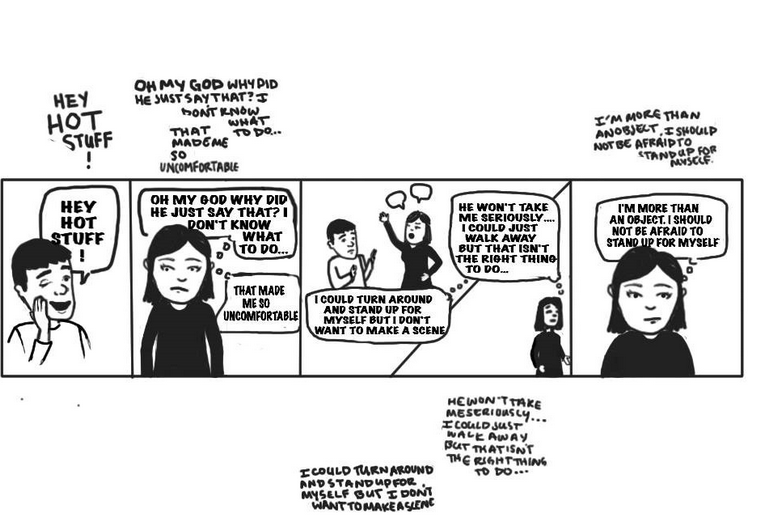It was one of the first cool nights in fall. Three friends and I meandered around South Norwalk’s trendy downtown area. As the night ended, we walked down unlit, empty streets to reach my car.
Out of my peripheral view, I saw a stocky, tall man stop his car, hop out and start walking behind us. I whispered to my friends that we needed to pick up our pace. As we sped up, our palms got sweaty and our hands got a little shaky. The man crossed the street, and matched our pace. We finally reached a convenience store haven, ducked in and peered around quickly to see the man turn back towards his car.
Some may say it was irrational to get nervous. Some may say it was silly to start walking faster.
But the statistics point to a different conclusion.
In 2008, Holly Kearl, founder of the organization Stop Street Harassment, interviewed 811 respondents for an informal study in her research book. Over 99 percent of respondents said that they experienced some form of street harassment. Eighty- seven percent of women were the target of a sexist comment in public, and 81 percent of the respondents received sexually explicit comments from unknown men.
Many women, including the Stop Street Harassment female respondents and myself, have experienced street harassment.However, it’s catcalling that is the most common form of street harassment, and is therefore getting the most attention.
The movement against catcalling any shout or comment of a sexual nature– is growing as these “compliments” are coming under much-needed scrutiny. On Sept. 28, Hollaback, an organization designed to end street harassment, released a viral video featuring Shoshana B. Roberts walking around New York City neighborhoods for 10 hours, ultimately enduring over 100 catcalls.
A cat-call may seem inconsequential, but it is equivalent to telling a woman that she simply exists for a man’s pleasure. A man shouting a catcall is an indication that he thinks he is superior enough to make a woman feel degraded and demeaned, without any repercussions.
Many men, including Steve Santagati, the controversial CNN guest speaker on the Hollaback video, claim that catcalling is a freedom of expression and that women should try standing up for themselves.
Standing up for ourselves? What a novel idea. It would be fantastic to be able to do that. However, just over a month ago, a young woman from Detroit named Mary Spears was shot and killed for rejecting a 38-year-old man’s sexual advances.
This tragedy shows how unrealistic and dangerous it can be for a woman to stand up for herself.
Santagati went on to say, “There’s nothing more that a woman loves to hear than how pretty she is.” I guess Santagati forgot about the dictionary-sized list of other compliments (smart, strong, confident, etc.) that women would rather hear. Throughout history, women have been obligated to focus on their looks, but finally we are starting to overcome that stereotype created by men like Santagati.
With ignorant claims like the ones made by Santagati, we might as well be back reading one of the 1960’s bestsellers, “How to Be a Good Wife.”
Personally, I would ditch the book and start planning for our future of a gender-equality takeover.















































